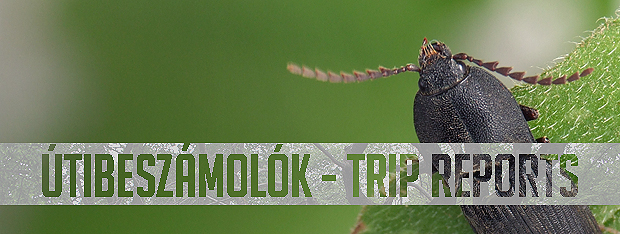
TRIP REPORTS
9-11.V.2012, Zemplén-Mountains
Two days in the Zemplén Mountains,
with my friend Attila Kotán and our museologist colleague,
Gábor Hegyessy, from
the Kazinczy Museum, Sátoraljaújhely. We visited the
places, which I have already
seen last year, but several different and for the Zemplén
Mountains new species
were found. Forty-two species of Elateridae were caught during our
trip.
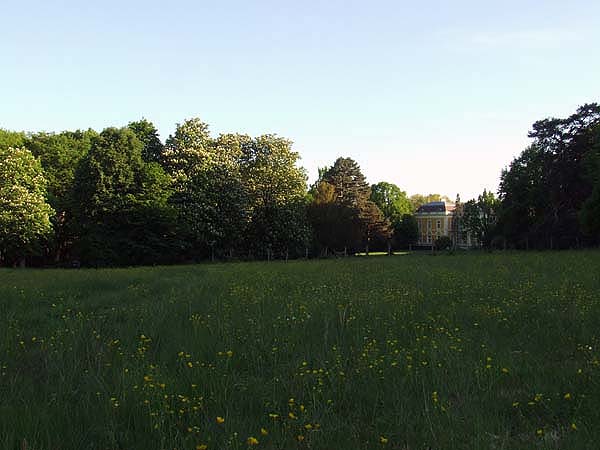
We arrived to the castle
park of Füzérradvány in the late afternoon, and
started collecting from the old
oaks with our long nets. Later at night we were walking from tree to
tree,
using torches to find saproxylics.

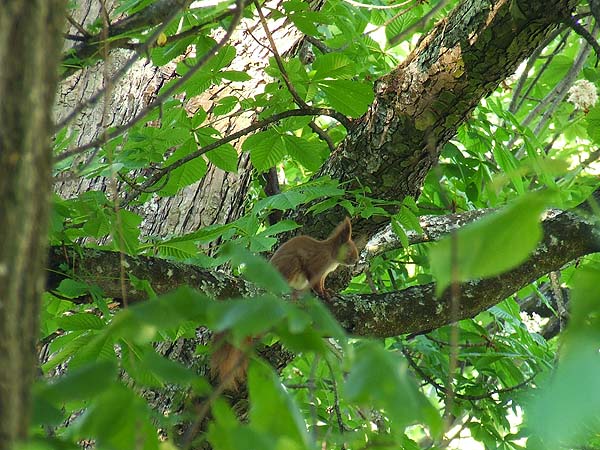
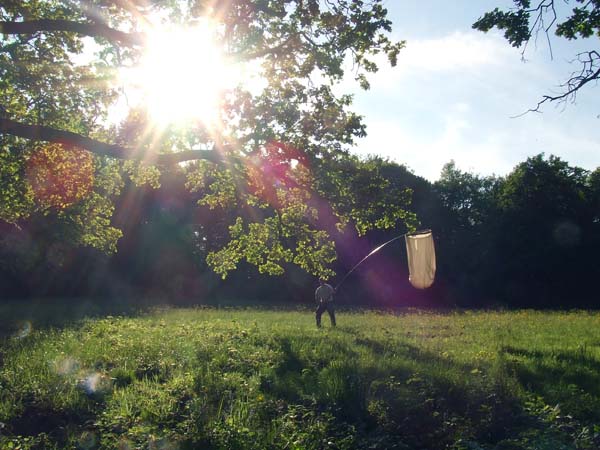
The
last hour before sunset, is the best time for netting the canopy of old
trees. Hundreds of insects swarmed around.
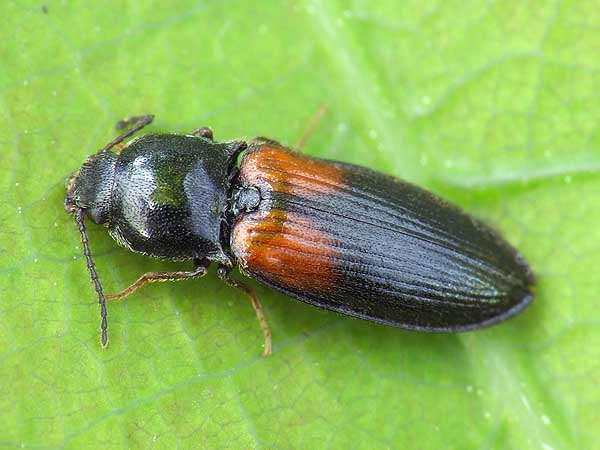
Calambus bipustulatus
(Linnaeus, 1767) from the
net.

Later we walked around these old, dying trees, searching for rare species

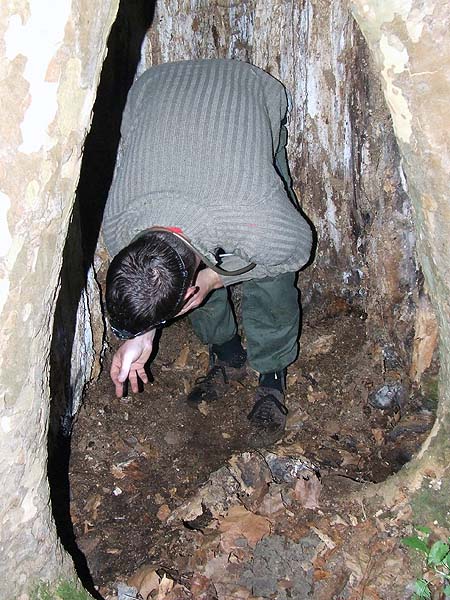
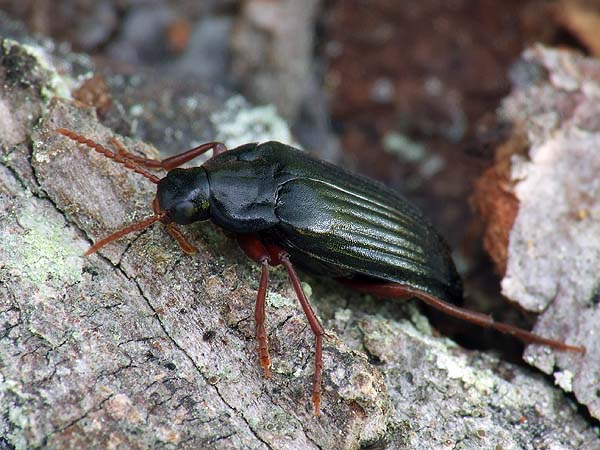
Rare
false darkling beetles, like Melandrya barbata (Fabricius, 1787) were crawling on the
wall of the
cavity.

Reitterelater bouyoni (Chassain, 1992) was hiding in a
small crevice. One of our rarest
saproxylic click beetles, develops in hollow trees-
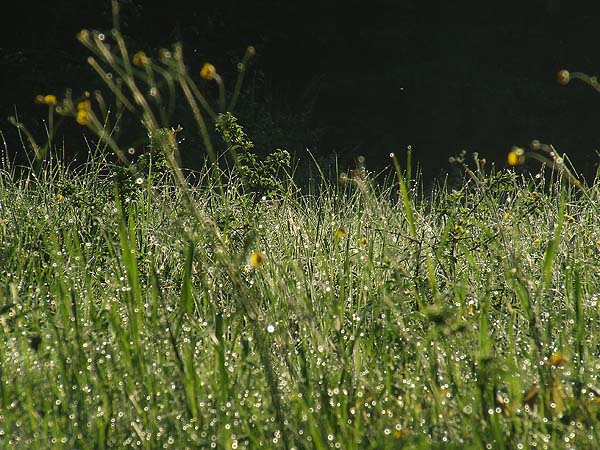
Morning
in the castle park.
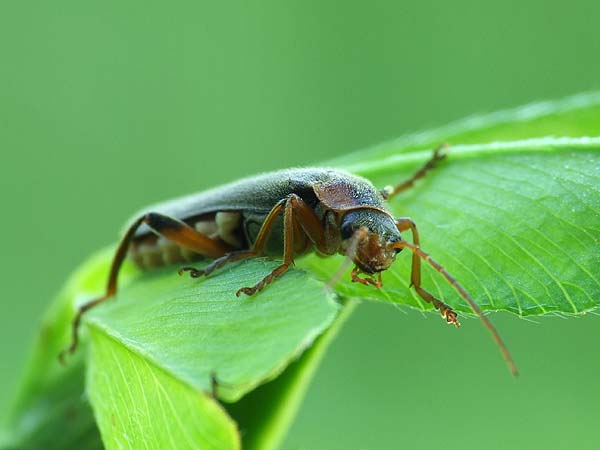
Wet
Cantharis rustica Fallén, 1807.
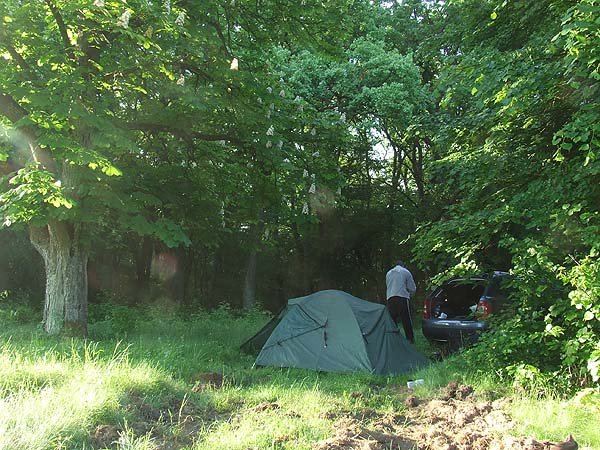

After
a quick breakfast we started collecting again.
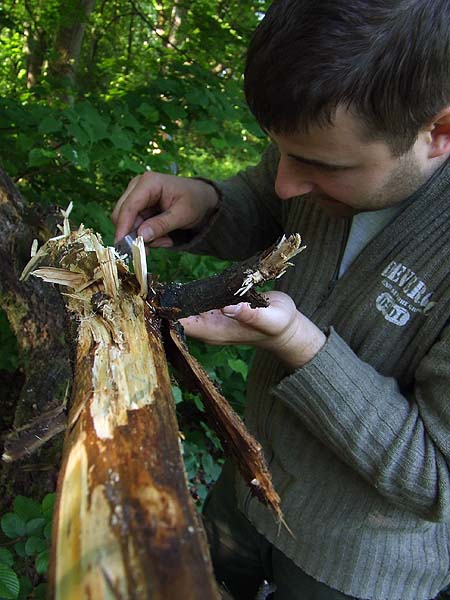
Attila examined
an old lime,
and found Oplosia cinerea (Mulsant,
1839) just before emergence.

Oplosia cinerea (Mulsant, 1839)

Pseudoptilinus
fissicollis (Reitter,
1877): these showy
and large deathwatch beetles were still sitting in their exit holes
(photo: Nikola
Rahmé)
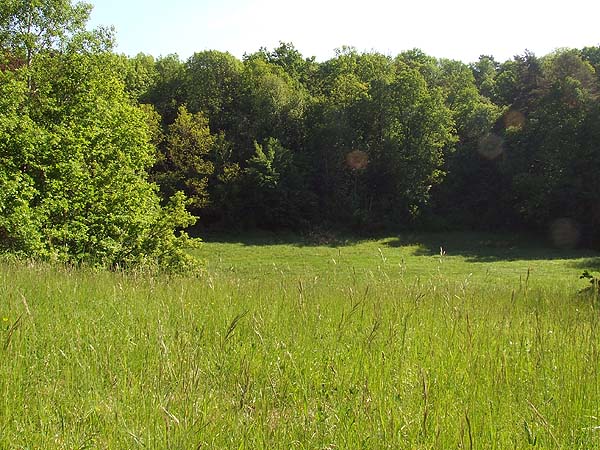
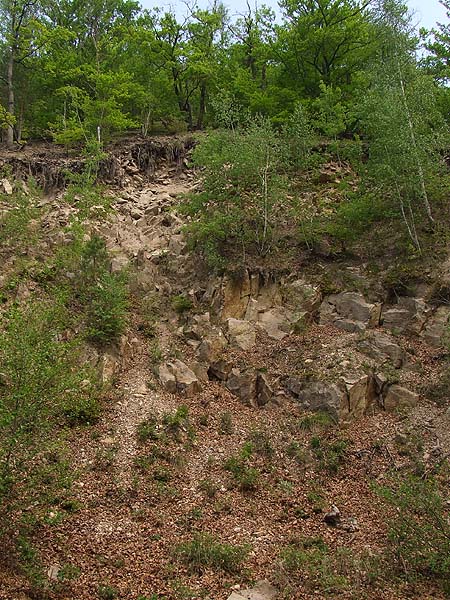
Later we jumped into our car, and travelled to the Ósva-valley at Telkibánya.
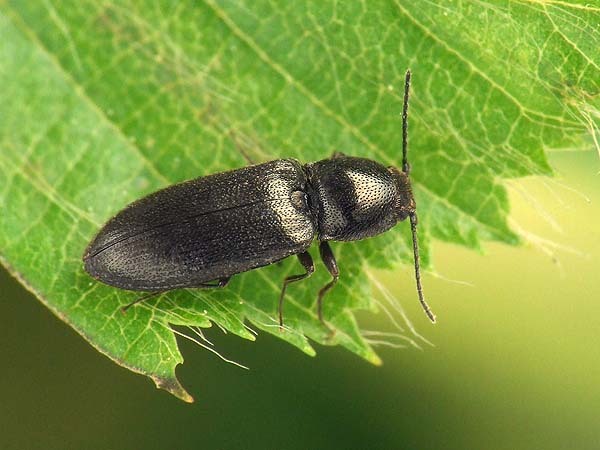
Pheletes aeneoniger (DeGeer, 1774) beaten from
vegetation.
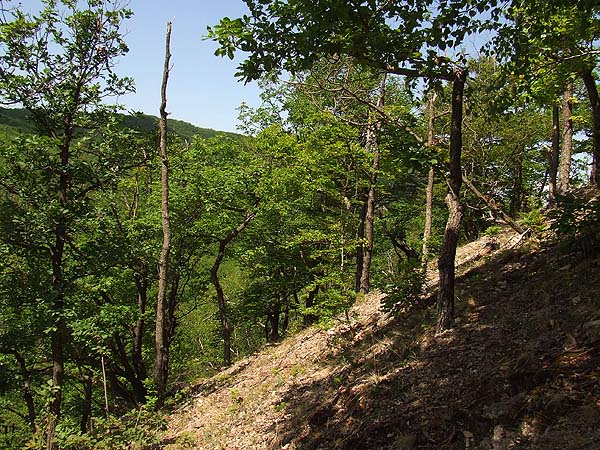
We
climbed to the sunny hillside, to this very special biotope.
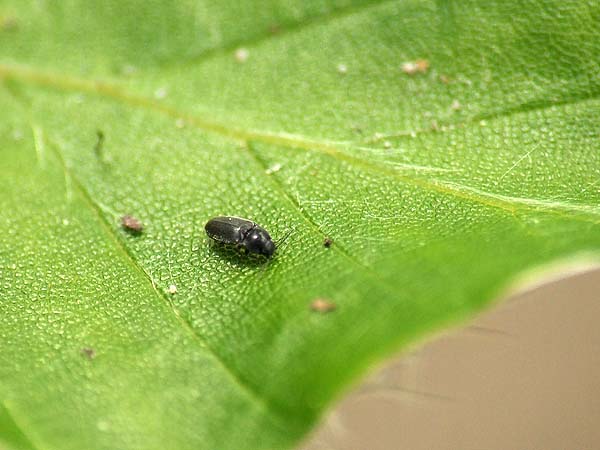
Our
smallest click beetle, Quasimus
minutissimus (Germar, 1823) was
swarming on vegetation.
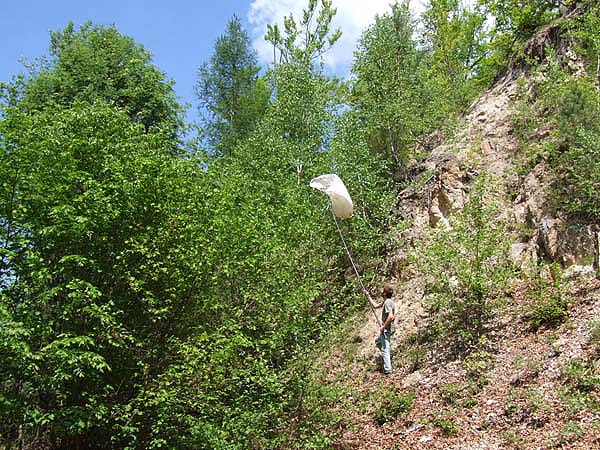
On a small clearing several beetles were seen flying in the air, so we prepared our long nets. (photo : G. Hegyessy)
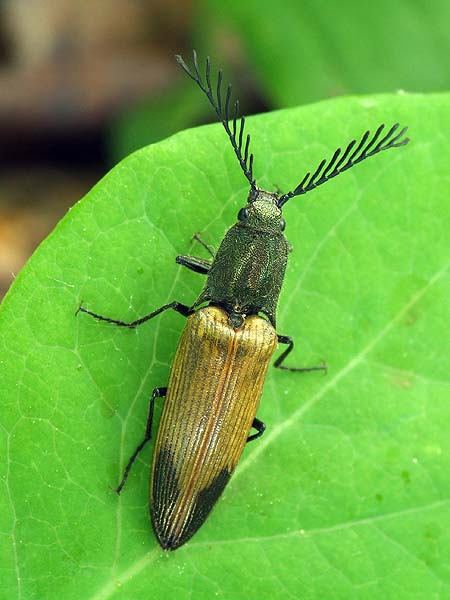
Ctenicera virens
(Schrank, 1781) is one of our most amazing click beetles. It
is only known from the higher regions of Hungary: the Bükk,
Kőszeg, Sopron and
Mátra Mountains, and we have two old specimens with the label
"Budapest,
Jánoshegy". These are the first specimens for the Zemplén
Mountains. The males
are slimmer, and have distinctively pectinate antennae, while females
are a bit
larger, up to two centimeters. The best way of catching them was
hand-capturing.
It was cool to see these colorful beetles flying slowly in the sunhine.
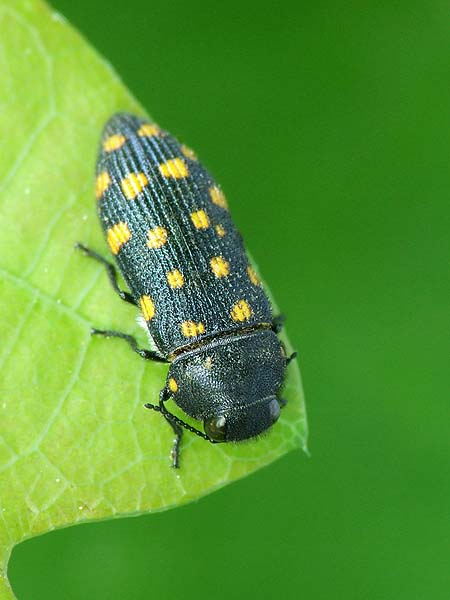
Small
yellow flowers attracted jewel beetles from the forest. A quite rare
species, Acmaeodera
degener (Scopoli,
1763) was caught here.

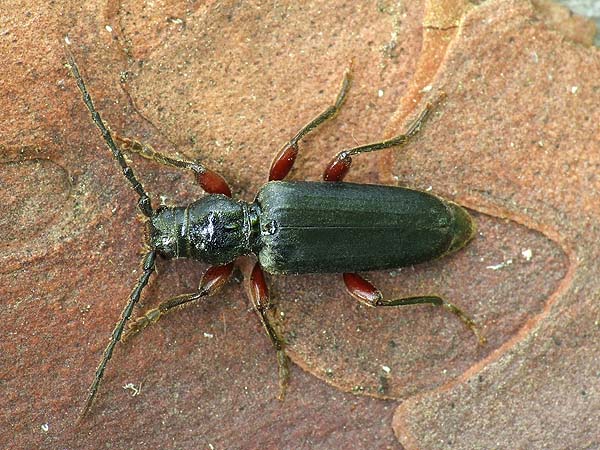
Longhorns
associated with
conifers: Tetropium castaneum
(Linnaeus, 1758)
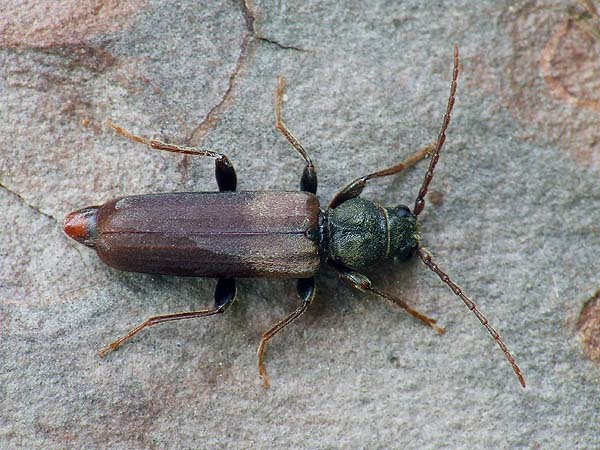
and Tetropium fuscum (Fabricius, 1787).
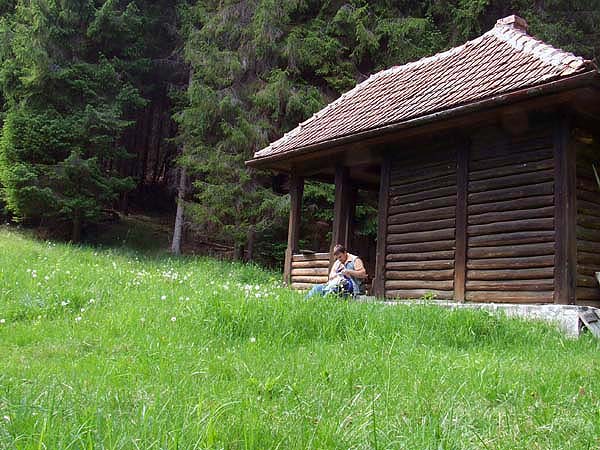
Our road led to
this mountain
hayfield, where several large and shiny click beetles were seen flying
around.
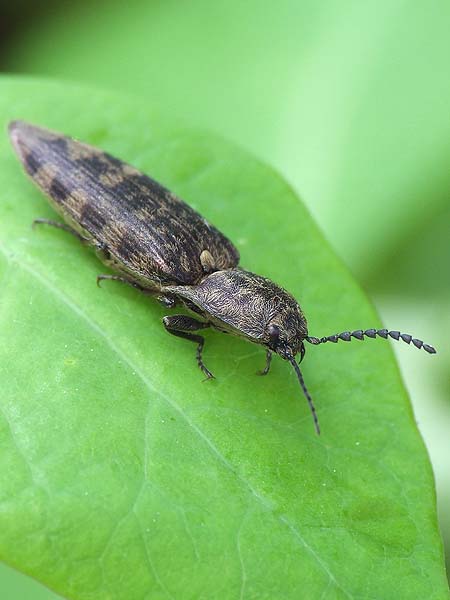
Actenicerus siaelandicus (O.F. Müller, 1764)
prefers
wet places in the mountain zone.
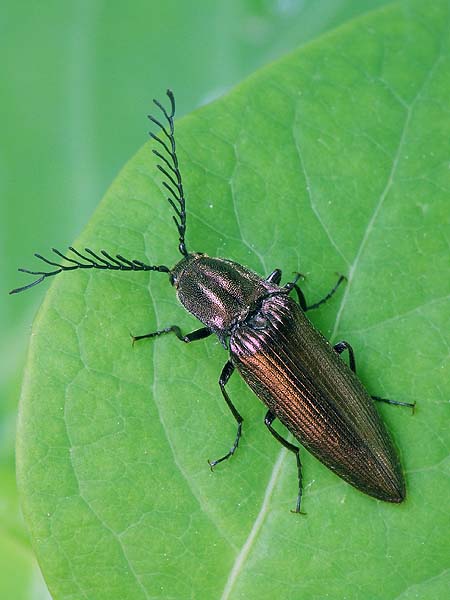
.
Ctenicera pectinicornis (Linnaeus, 1758) male, searching for females.
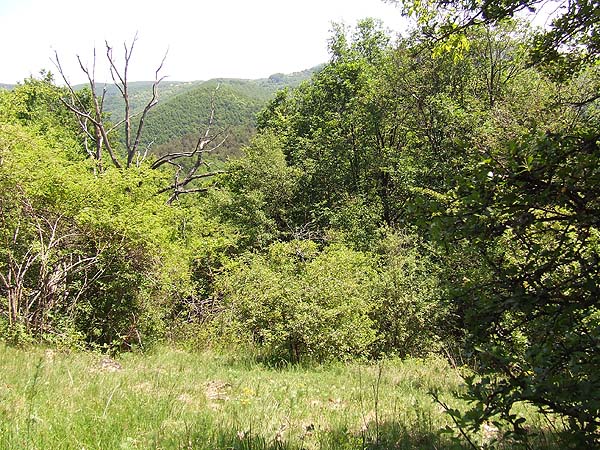
Our
next stop at an old wood pasture.

Anthaxia salicis (Fabricius, 1777), common on yellow flowers.
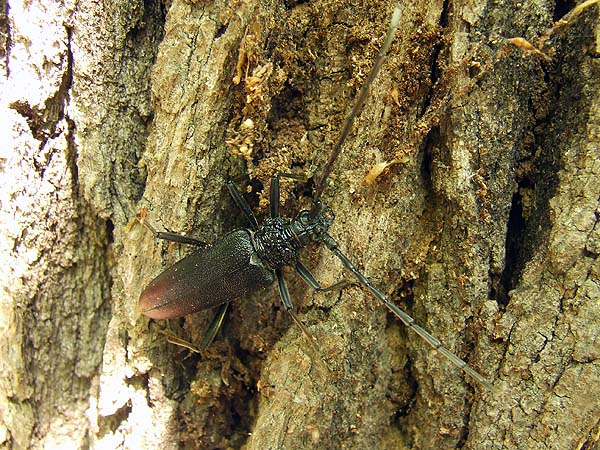
An early
specimen of the great
capricorn beetle Cerambyx cerdo Linnaeus, 1758.
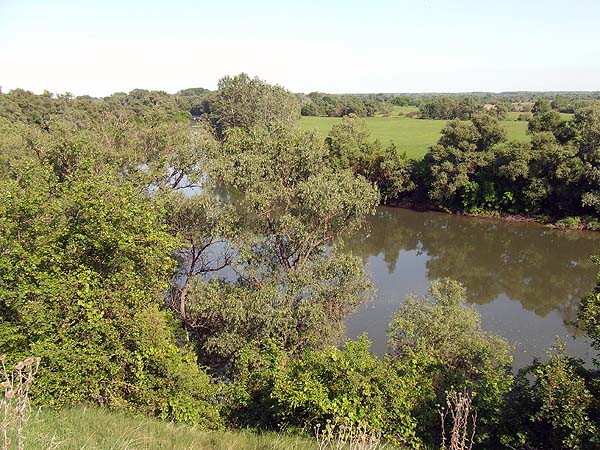
On our way home we stopped at the river Bodrog.
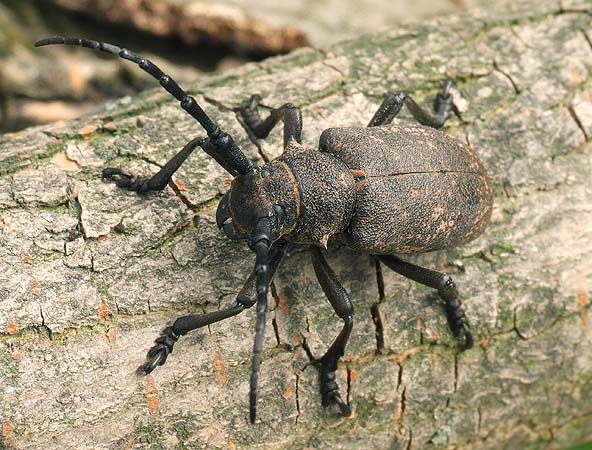
Lamia textor (Linnaeus, 1758) was walking on the ground.

The last click beetle of our trip: Synaptus filiformis (Fabricius, 1781).
The list of the click beetles found in these two days:
Agriotes acuminatus (Stephens, 1830)
Agriotes lineatus (Linnaeus, 1767)
Agriotes pilosellus (Schönherr, 1817)
Agriotes sputator (Linnaeus, 1758)
Agriotes obscurus (Linnaeus, 1758)
Agrypnus murinus (Linnaeus, 1758)
Ampedus cinnabarinus (Eschscholtz, 1829)
Ampedus pomorum (Herbst, 1784)
Ampedus rufipennis (Stephens, 1830)
Ampedus sanguineus (Linnaeus, 1758)
Ampedus sinuatus (Germar, 1844)
Anostirus purpureus (Poda, 1761)
Athous haemorrhoidalis (Fabricius, 1801)
Athous subfuscus (O.F. Müller, 1764)
Athous vittatus (Fabricius, 1792)
Calambus bipustulatus (Linnaeus, 1767)
Cidnopus pilosus (Leske, 1785)
Ctenicera pectinicornis (Linnaeus, 1758)
Ctenicera virens (Schrank, 1781) ó
Dalopius marginatus (Linnaeus, 1758)
Denticollis linearis (Linnaeus, 1758)
Dicronychus rubripes (Germar, 1824)
Drasterius bimaculatus (Rossi, 1790)
Cardiophorus gramineus (Scopoli, 1763)
Ectinus aterrimus (Linnaeus, 1760)
Elater ferrugineus Linnaeus, 1758 – larva
Ischnodes sanguinicollis (Panzer, 1793)
Limoniscus violaceus (P.W.J. Müller, 1821) – larva
Limonius poneli Leseigneur et Mertlik, 2007
Megapenthes lugens (Redtenbacher, 1842) – larva
Melanotus brunnipes (Germar, 1824)
Melanotus villosus (Geoffroy, 1785)
Nothodes parvulus (Panzer, 1799)
Pheletes aeneoniger (DeGeer, 1774)
Procraerus tibialis (Lacordaire, 1835)
Prosternon tessellatum (Linnaeus, 1758)
Quasimus minutissimus (Germar, 1823)
Reitterelater bouyoni (Chassain, 1992)
Selatosomus latus (Fabricius, 1801)
Stenagostus rufus (DeGeer, 1774) – larva
Synaptus filiformis (Fabricius, 1781)